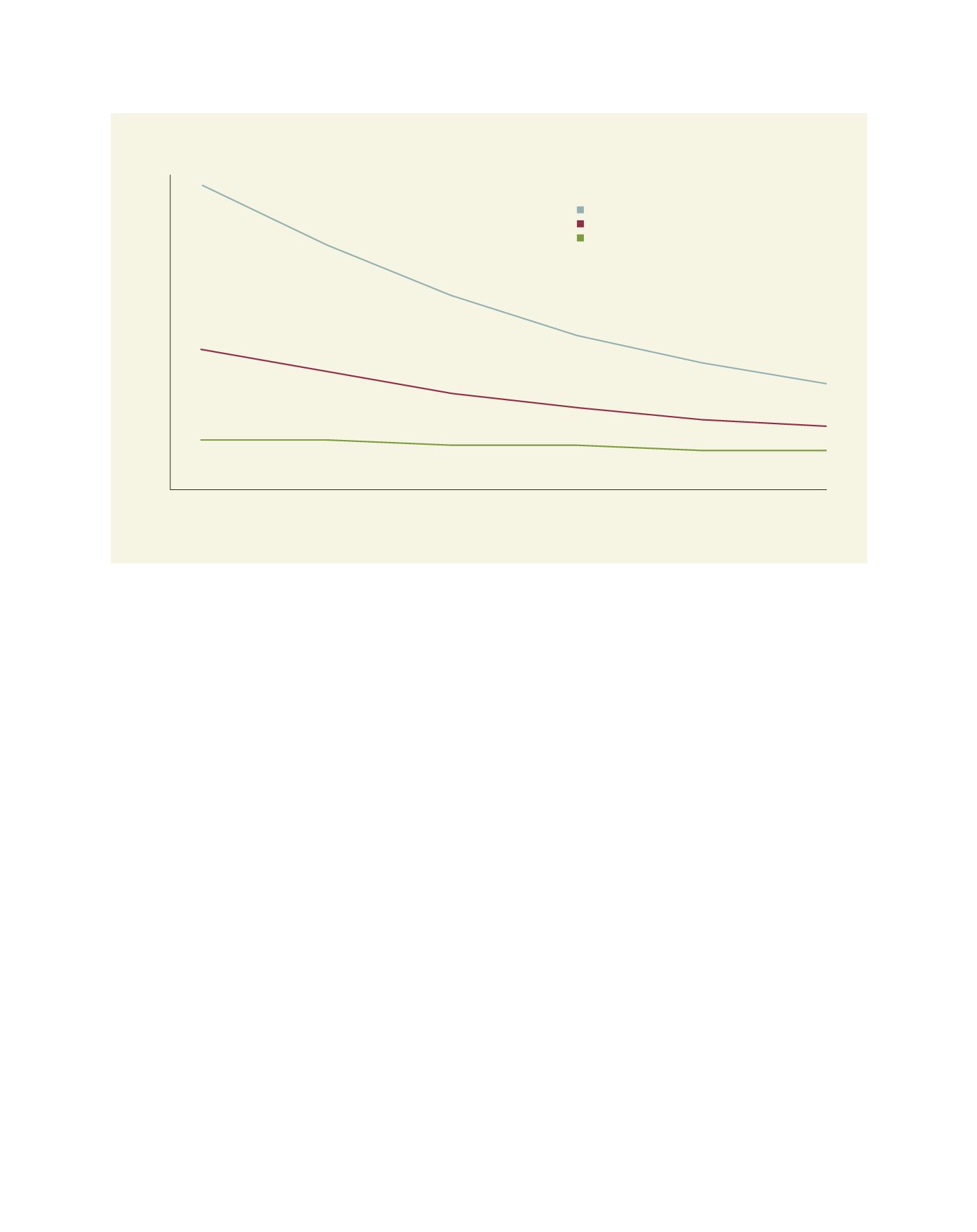

[
] 18
largely enclaves producing tropical crops and permanent trees for
export. Consequently, family farms are reproduced (or survive)
within a historical context of struggle against larger-scale capital-
ized farming and land alienation.
Small-scale farmers have generally been pejoratively perceived
and labelled by many policy experts and scholars as ‘traditional’
or ‘backward’, ‘subsistence farmers’, inferior to technologically
progressive profit-oriented LSCFs, linked to financial inputs and
commodity markets. They are often wrongly called ‘communal
farmers’ working collectively on commonly held land without
secure tenure. The failure of SSA to achieve globally comparable
agricultural productivity levels tends to be attributed to various
alleged maladies considered inherent in family farming systems,
including land tenure insecurity, subsistence orientation and the
presumed absence of production and market economies of scale.
Family farms are multifunctional production and consump-
tion units, which meet a range of their consumption and
income needs. Their production is structured around indi-
vidual family and/or household-owned fields (often including
extended family members), while their livestock rearing (of
family-owned herds) and natural resource management
activities are mostly undertaken conjointly on common
lands. Family farm members work together on their arable
plots and in tending to their livestock. Most family farms in
sub-tropical SSA practise mixed crop and livestock farming.
While most family farms do not own cattle, large family farm
populations in Eastern and West Africa predominantly prac-
tise pastoralism. Generally, family farms have common access
to community-owned natural resource reserves, and tend to
pursue ecologically sensitive management practices regard-
ing their use and reproduction of land and natural resources.
Diversity and heterogeneity
The scale and organizational forms, as well as the production
focus of family farming in SSA, have mutated significantly
since independence due to other structural changes, includ-
ing rapid demographic growth and urbanization, snail-paced
technical shifts in agriculture, new forms of urban demand for
food and their increased market integration. Moreover, family
farms are stratified according to various social hierarchies
derived from organic tendencies to economic differentiation,
territorial and social heterogeneity, and social identity differ-
ences such as gender, generation, race and ethnicity.
A heterogeneous range of family farms operate under the
diverse agroecological, conditions of SSA based upon histori-
cally specific patterns of political and economic transformation
shaped by the variegated incorporation of the region into world
markets, over the last century.
4
What is relatively unique about
the resilience of family farms in SSA is that their predominance
is derived from the persistence of household-lineage based land
tenure relations, despite various waves of land alienation which
began at the dawn of the nineteenth century,
5
and continue to
date.
6
A
priori
family farms have access to land largely through
allocations and inheritance rules governed by customary proce-
dures, although access increasingly occurs through various
forms of land rentals, sharecropping and informal land sales
(and livestock keeping arrangements).
It is estimated that there are over 100million family farms in the
44 countries of SSA. Their numerical growth is largely in conso-
nance with the changing density of the region’s rural population,
particularly those active in agriculture. While the proportion of
SSA’s rural population fell from 84.5 per cent in 1961 to 62.4 per
cent in 2013, the absolute number rose substantially from 188.4
Total land area per capita in SSA
Source: FAO STAT 2014
1960
0
1
2
3
4
5
6
7
8
9
10
Area per capita (Ha/person)
1970
1980
1990
2000
2010
Agricultural area per capita
Arable land per capita
Land area per capita
R
egional
P
erspectives
















